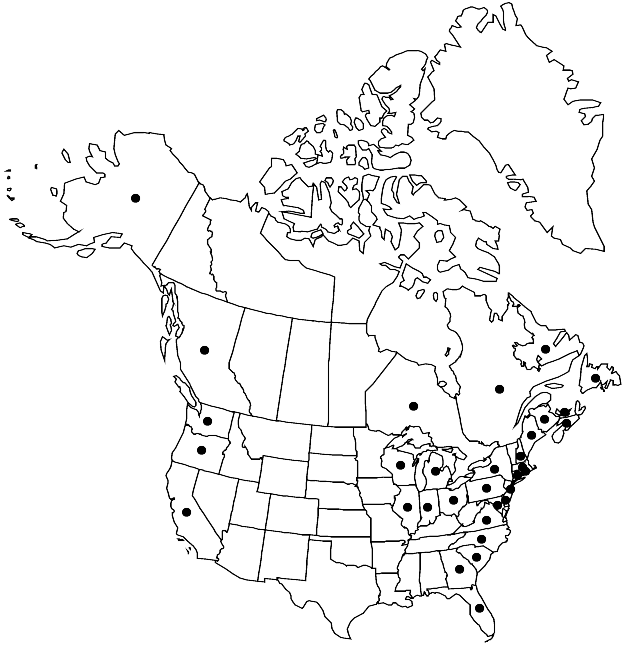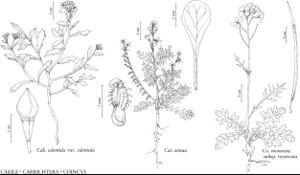Cakile edentula
Fl. Bor.-Amer. 1: 59. 1830.
Annuals or, rarely, perennials, (compact, rarely sprawling). Stems erect, or, rarely, prostrate, (much-branched), to 8 dm. Cauline leaves: blade ovate to spatulate, or (distal) oblanceolate (less lobed), (smaller distally), margins crenate, dentate, or sinuate (not pinnatifid). Racemes 1–2 dm, (congested); rachis straight. Fruiting pedicels 1.8–8 mm. Flowers: sepals 3.5–5 mm, lateral pair not saccate basally; petals white to pale lavender, (well-developed or reduced to bristles), 4.6–9.7 × 1.5–3 mm, claw not distinct. Fruits (4-angled or 8-ribbed), cylindrical, 12–29 × 3–9 mm; proximal segment terete, (5–10 mm); terminal segment fusiform to turbinate, (7–15 mm), (beak flattened), apex acute, blunt, or retuse. Seeds: cotyledons accumbent to, sometimes, incumbent.
Distribution

B.C., N.B., N.S., Ont., P.E.I., Que., Alaska, Calif., Conn., Del., Fla., Ga., Ill., Ind., Maine, Mass., Md., Mich., N.C., N.H., N.J., N.Y., Ohio, Oreg., Pa., R.I., S.C., Va., Wash., Wis., in e Asia (Japan), Australia
Discussion
Subspecies 2 (2 in the flora).
Elements of Cakile edentula are native in North America; the typical variety is introduced on the Pacific Coast and probably on beaches of the Great Lakes Region.
Selected References
None.
Lower Taxa
Key
| 1 | Fruits 4-angled, terminal segment apex usually acute or blunt, rarely retuse. | Cakile edentula subsp. edentula |
| 1 | Fruits 8-ribbed, terminal segment apex blunt or retuse. | Cakile edentula subsp. harperi |
"elongated" is not a number."dm" is not declared as a valid unit of measurement for this property."thick" is not a number."dm" is not declared as a valid unit of measurement for this property.
